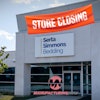
By now, most distributors – even if operating as an “essential business” – have been inundated with analysis, solicitations and advice as to whether they should make a claim for lost income and/or whether it is even recoverable under their insurance policies. For weeks, such materials have focused on “business interruption” (BI) coverage. While the essence of BI claims is addressed below, the short answers to these questions are: (1) assuming you have BI coverage, promptly file a claim with your insurers through your agent; and (2) whether coverage exists is a function of how your coverage provisions and exclusions read. As such, it is critical for distributors to have their coverage options reviewed by qualified counsel or other insurance professionals. Distributors who have not filed claims, or need to supplement claims, should review Business Interruption Insurance Claims: Nuts & Bolts, an article I posted on my firm’s COVID-19/Coronavirus Resource Center: www.burkelaw.com/pressroom-381.html. However, as addressed below, BI coverage is not the only potentially available coverage.
What Coverages are Potentially Available under Insurance Programs?
There are generally three types of insurance policies: “all-risk” policies, manuscript policies, and general form policies. The last category includes policies that often rely on standardized forms developed by the Insurance Services Office (ISO) – an organization that provides uniform coverage and exclusion provisions for the insurance industry. Even these standardized policies can differ, significantly, as many carriers utilize modified versions of ISO forms – a good reason for distributors to carefully review policy portfolios.
Two common ISO forms providing for business income coverage are numbered CP 0010 and CP 0030. They provide for recovery of the actual loss of Business Income (a defined term) sustained due to the necessary suspension of the insured’s operations during the period of restoration. Typically, the suspension must be caused by “direct physical loss of or damage to” covered property. This coverage requirement is the most fertile ground for litigation.
You may have heard from agents or other sources that structural damage/alteration is a prerequisite to insurance recovery, and invisible viruses, therefore, are not a covered cause of loss. According to certain case law, such is not the case – non-structural damage can result in “direct physical loss of or damage to” property where the peril results in an “imminent threat” to property, health and/or safety; the larger question is whether the nation-wide shutdown falls within the intended meaning of the physical loss or damage to property requirement of BI coverage. On April 13, the Pennsylvania Supreme Court issued an opinion challenging the legality of Governor Wolf’s Disaster Proclamation, which is essentially a business closure and stay-at-home order (COVID Orders). In upholding the Governor’s constitutional right to do so, the Court found that the COVID-19 pandemic was a natural disaster (triggering the Disaster Proclamation) because the pandemic inflicted substantial damage to property, among other things (like endangering human life). While not dispositive, this Court case suggests that insureds may have legitimate claims that COVID-19, and the associated COVID Orders, have in fact caused businesses substantial property damage and hence direct, physical loss or damage.
Most insurance policies contain counterparts to business interruption coverage, either as to dependent property (i.e., direct physical loss or damage to property operated by another that the insured depends on, such as customers and key vendors) or in the event a business disruption is caused by law or ordinance (i.e., Civil Authority or “CA”). CA coverage can also be a stand-alone coverage provision or endorsement, but this coverage typically kicks-in when a business closure results from governmental action, denying access to covered property or otherwise prohibiting certain activity from occurring (e.g., COVID Orders, etc.). CA clauses pertain to public safety threats in the aftermath of a natural disaster, act of terrorism or war. Insureds may also have other coverage provisions that apply to damages caused by the COVID-19 pandemic, such as event cancellation (e.g., conferences and trade shows, etc.), perishable inventory coverage and/or other policy protections (e.g., a D & O policy). Like BI, CA clauses also typically require physical loss of or damage to covered property. However, CA coverage is often limited to a specific duration (e.g., 4 weeks), so even if applicable, CA coverage may not be as valuable as the name suggests.
The Significance of Exclusions
Most distributors have likely heard that exclusions can negate coverage. Some policies, for example, have adopted a standardized exclusion, published by the ISO in 2006, known as number CP 01 40 07 06. This form exclusion is intended to avoid claims due to any virus, bacterium, or other microorganism. Even though this language has been approved by many state insurance regulators, (1) not all exclusions are adopted as written, and (2) they may not always bar claims under policies, particularly because exclusions are narrowly construed by courts and against insurers. In a recent case of mine, an exclusion for “Microbes” and “Micro-organisms” existed in the standardized policy comprised of modified ISO provisions, but the terms “viruses” and “pandemic” did not. Without getting into the biology, this causes one to question if the intent of the insurance contract is to exclude viruses, especially since CP 01 40 07 06 had existed for more than a decade.
Seasoned practitioners believe that the absence of this ISO exclusion form in a policy supports two key arguments: (1) that coverage exists under the perils covered by the policy (i.e., that a virus can in fact cause physical loss/damage to covered property); and (2) that the absence of any virus exclusion means the intent of the parties’ was to cover such perils. While an important first consideration in any BI coverage analysis, the existence of an exclusion does not necessarily mean that coverage is not available (although most view the ISO CP 01 40 07 06 form to be a challenging hurdle). Hence, it is key to understand exactly how policy exclusions read.
The Landscape of Carrier Positions and Coverage Litigation; Impact on Claims
As part of our law firm’s insurance recovery practice, I have been tracking the state-of-affairs as it relates to BI/CA claims, insurance industry events and active litigation. On the regulatory side, Congress has pressed the insurance lobby to ensure that insurance companies cover COVID-19 losses under BI coverage. Despite obvious pushback (i.e., on the basis that any COVID-19 business losses are not covered, either because of an express exclusion or because COVID-19 does not constitute a direct physical loss of or damage to covered property – including dependent properties), the insurance lobby argues that covering such losses would financially devastate the carriers, to the point where all of them would, arguably, end up in insolvency proceedings. As of this writing, Congress has not acted and insurers are already sending out coverage guidance that loss/damage to businesses due to COVID-19 is not a covered peril, essentially peremptorily advising brokers and adjusters that claims should and will be denied. Such occurs regularly; I am not aware of any carrier accepting any claim for BI or other coverage due to losses from COVID-19.
At the same time, there is significant confusion at the state level. Certain states are looking to enact legislation to cover COVID-19 claims, even if in the face of seemingly iron-clad coverage exclusions (which if passed will lead to substantial litigation as insurers will not sit idly by while legislative bodies seek to rewrite existing policies). In other states, some insurance commissioners are siding with carriers, while others are advancing the BI cause. Quite recently, the California Insurance Commissioner issued a Notice to “all admitted and non-admitted insurance companies, all licensed insurance adjusters and producers, and other licensees and interested parties” requiring them to “fairly investigate all business interruption insurance claims caused by the Covid-19 pandemic.” The Notice tracks the legal obligations of insurers, which in turn is alleged in several cases asserting this failure as insurer bad faith. Yet, another ground to pressure carriers.
In the handful of cases filed to date, plaintiffs are seeking to combine the various COVID Orders with the cataclysmic effects, statistics and reactions to the COVID-19 pandemic to set up arguments that businesses, generally, have suffered direct physical loss of or damage to covered property. One common theme in the policies in these cases is the absence of any virus or pandemic exclusion; another is the failure of insurers to conduct adequate investigations (i.e., the bad faith claim noted above). Yet, no plaintiff nor plaintiff group has articulated any specific theory of liability (which is not required at the stage of filing a complaint), obviously waiting to see how the law “shakes out,” and not committing to positions at early stages of BI litigation. Some of the cases filed to date are class action cases, but my personal view is that insureds should file their own suits, for several reasons. One important point to note is that most insurance policies shorten the time frame to file suit (i.e., in-suit policy limits), so the legal statute-of-limitations does not apply, and, hence, under law, there is no way to avoid the shortened time period to sue your carrier.
No one apparently estimated the impact of a virulent pandemic in the context of insurance coverage, and, without doubt, some of the initial court determinations will be telling. While it is theoretically desirous to wait to see how the case law develops from early filed suits, especially if state legislatures or insurance regulators, or Congress, take further action, most claimants who seek to pursue their cases should do so, in my view, without regard to class suits. At this point, the issues are fairly-well categorized. Key take-aways in the COVID-19 BI conundrum are: (1) have your coverage properly reviewed to understand the  Mendelsohn
Mendelsohn
Distributors with questions about their policy portfolios or who are interested in discussing the substance of this article in more detail are encouraged to contact Fred Mendelsohn at [email protected] or 312-840-7004.





















